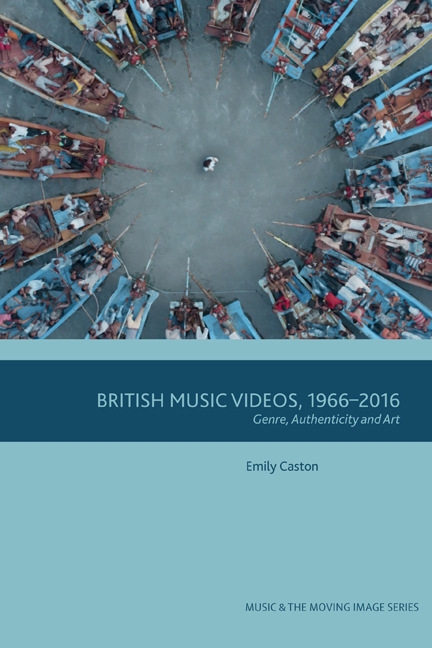Summary
The time has come to reflect on the other, broader academic issues raised in this work. Much of what has been presented in this book supports the analytical framework established by the first generation of cultural studies scholars, particularly that published by Goodwin (1993) and Aufderheide (1986) on the relationship between sound and image. Goodwin argued that each of the music components of a track (tempo, rhythm, arrangement, harmonic development, acoustic space and lyrics) could or would be related to elements of the visual track created: the tempo, for example, might be reflected in the speed of the camera movement, the editing in the action depicted or the visual effects, whilst rhythm might be echoed in the ‘pulse’ of images. A large number of videos produced in Britain during the period 1966–2016 beautifully illustrate Goodwin's argument: from The Cure's ‘Close to Me’ (Tim Pope, 1985) and The Art of Noise's ‘Close (to the Edit)’ (Zbigniew Rybczyński, 1984) to the syncopated heartbeat of Massive Attack's ‘Teardrop’ (Walter Stern, 1998). However, a huge number of the videos examined in this study can't be explained by Goodwin's model. Whilst minimalist videos such as Mount Kimbie's ‘Before I Move Off’ (Tyrone Lebone, 2010), Toy's ‘Lose My Way’ (Joe Morris, 2012), Wiley's ‘On a Level’ (Skepta, 2014) and Dean Blunt's ‘Mersh’ (2014) contain some minor elements of syncopation, they are absent of many of the more complex elements identified by Goodwin, yet they somehow succeed as videos because they are doing something more complex than simply ‘visualising a song’ as Goodwin theorised or ‘selling a star’ as Vernallis wrote. That is because they are platform-sensitive. ‘Lose my Way’ works on YouTube, but probably would have been rejected by the producers of The Chart Show and MTV if it had been made in the 1990s. However, this isn't to reject Goodwin’s model, because it remains the best available useful theoretical framework to serve as a starting point for a language of music video critical appreciation.
In Britain, what kind of video has been commissioned depends on the extent to which it is perceived to authenticate the artist by the artist, management and marketing department. A video for one of the UK's then most successful bands once ended up in court because the band decided in the middle of filming that the video was inauthentic
- Type
- Chapter
- Information
- British Music Videos 1966 – 2016Genre, Authenticity and Art, pp. 142 - 157Publisher: Edinburgh University PressPrint publication year: 2020



